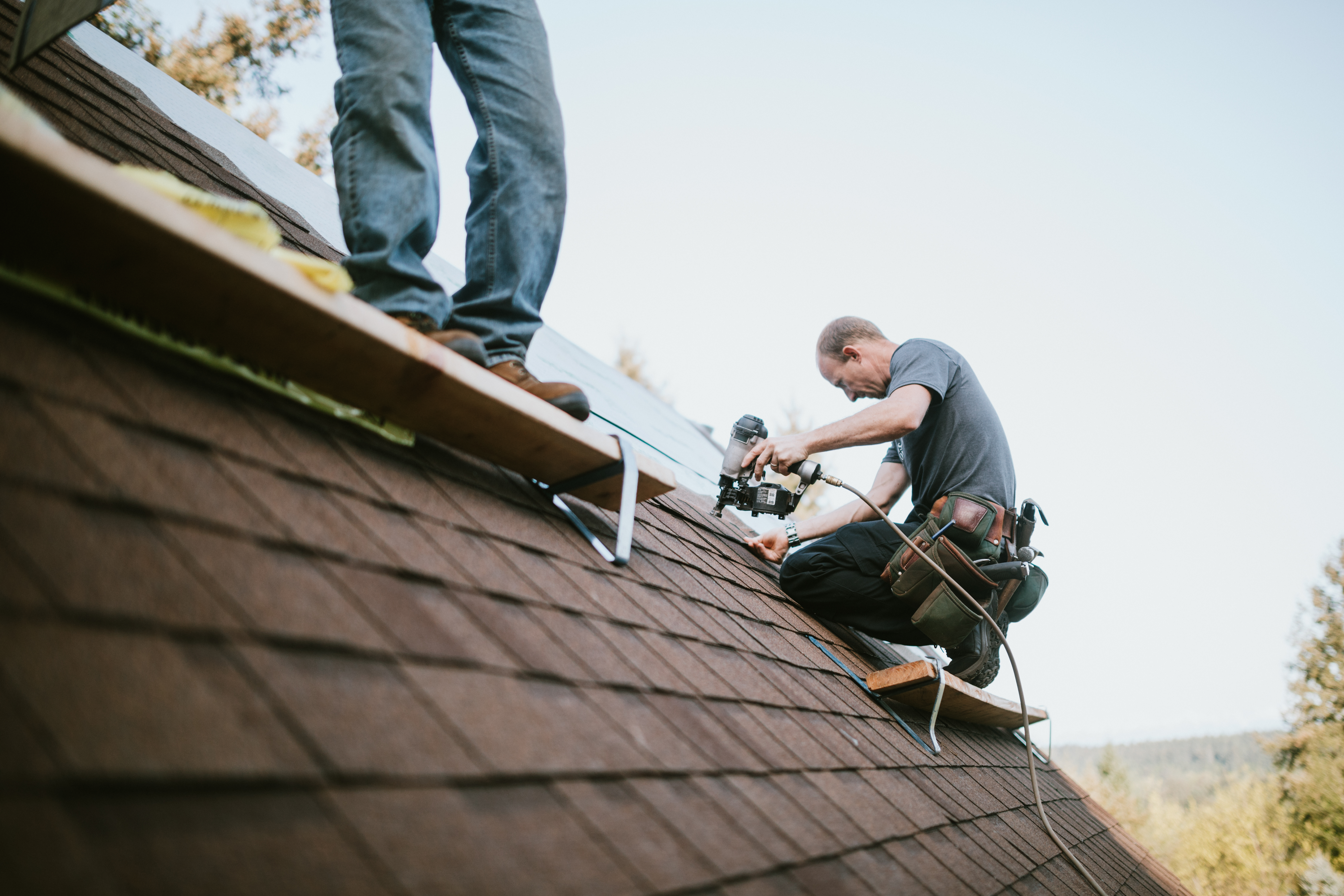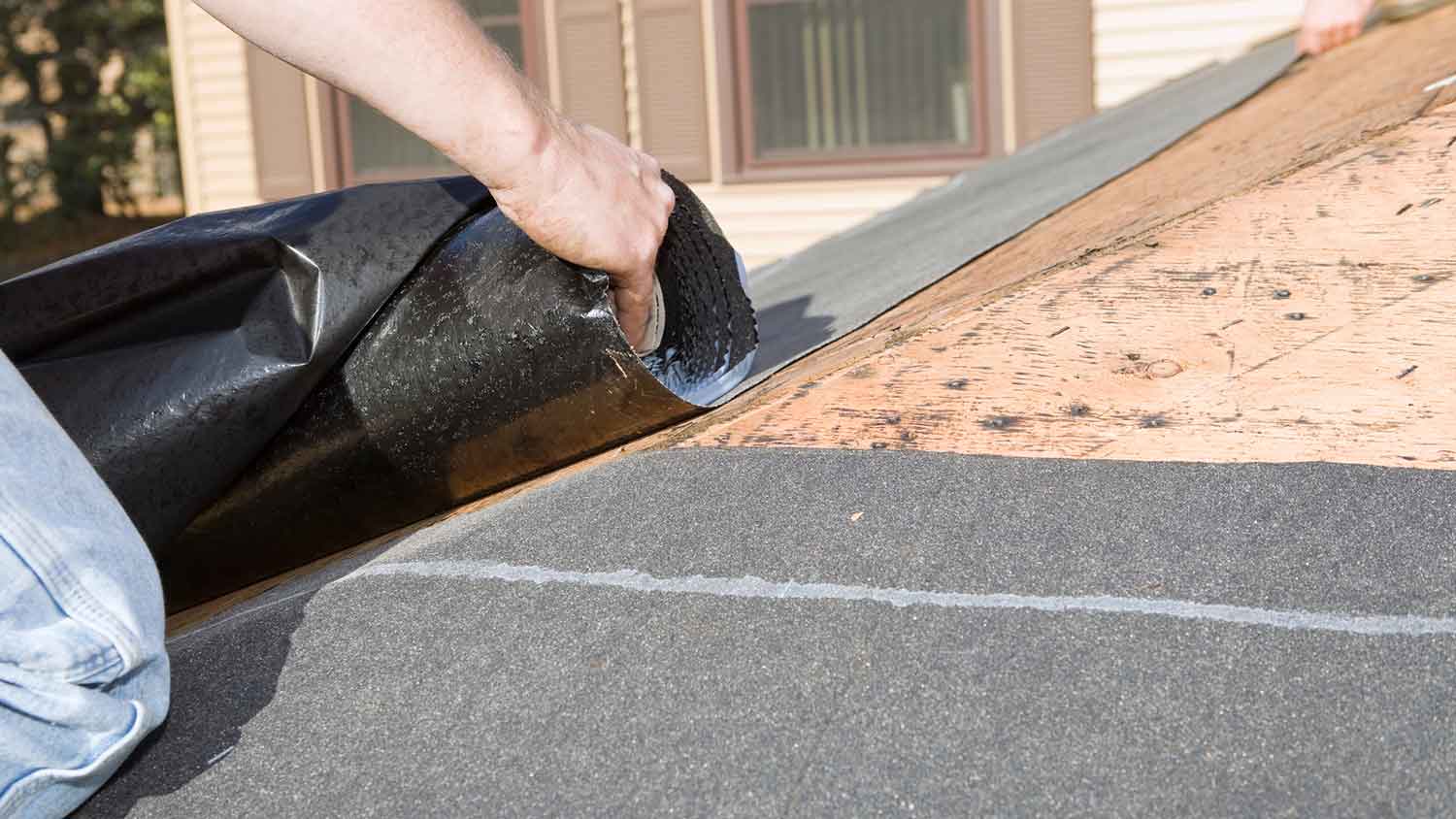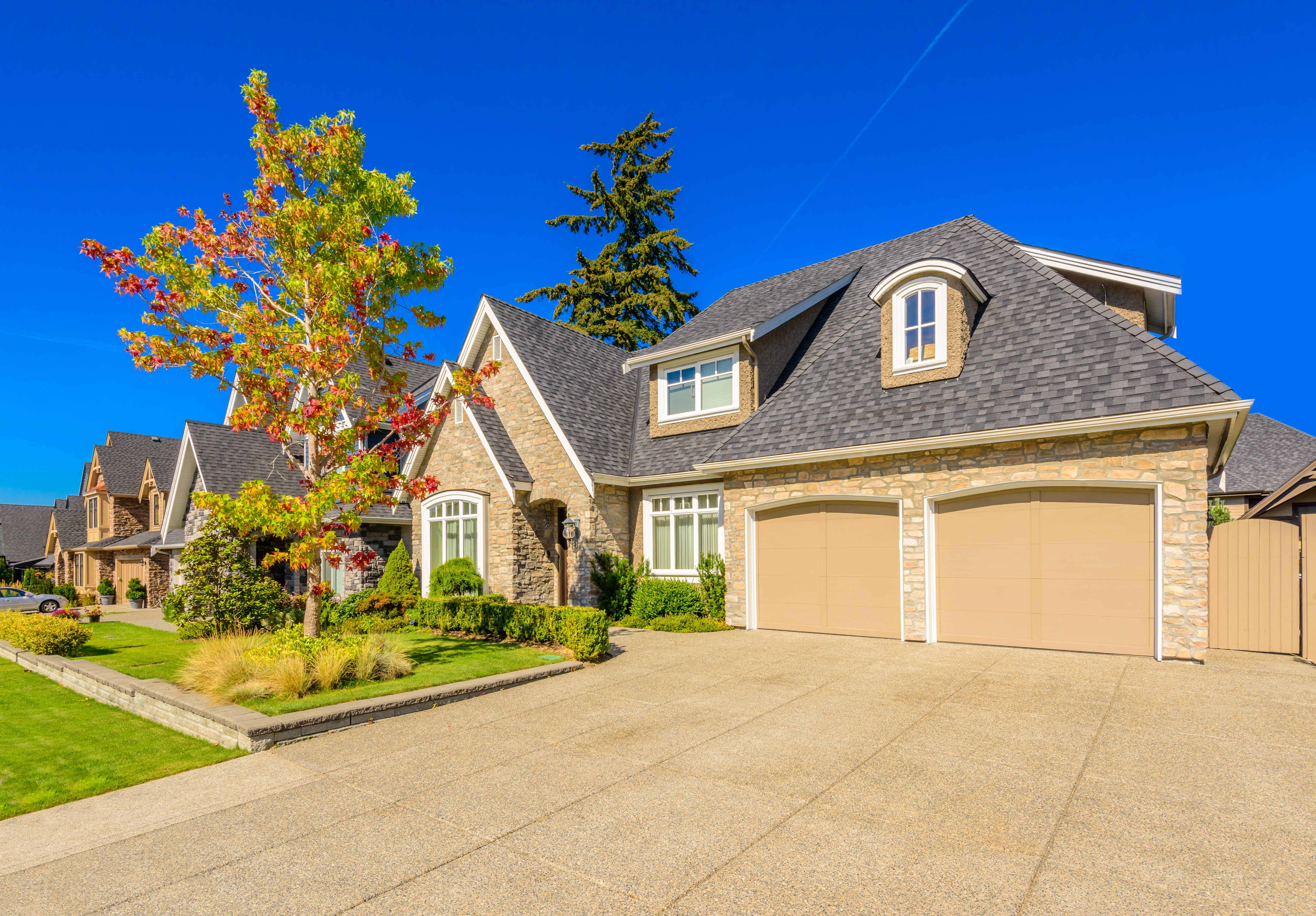
Need a new roof but not sure it’s within your budget? See the average roof replacement costs in Charlotte and what affects your total to ensure you’re prepared.
Don’t underestimate the importance of underlayment


You should replace roofing as soon as possible if high winds expose the underlayment.
Synthetic underlayment is waterproof and can be exposed for up to six months.
Felt underlayment is highly vulnerable to damage and needs immediate covering.
When it comes to roof underlayment, it’s out of sight out of mind for most homeowners. Sandwiched in between roofing layers, this protective element does its job best when unseen.
However, if storms or heavy winds damage the roofing above it, the underlayment can be exposed. So, what happens when this unsung hero of the roof is revealed? And how long can roof underlayment be exposed before it’s damaged? We’ll explain everything you need to know.
Roof underlayment is one of the many protective layers of roofing that keep a home safe from the elements. The uppermost layer of roofing is the shingles or another external roofing material, followed by the underlayment, sheathing, and finally, the rafters.
Underlayment is constructed from waterproof and durable materials as an added layer to keep moisture out of a home beyond just the shingles. Underlayment helps prevent mold, damage, and moisture from entering a home.
Homes have one of three types of roof underlayment under their roofing—either felt, synthetic, or rubberized asphalt underlayment.
| Underlayment Type | Life Span (Years) | Benefit | Drawback |
|---|---|---|---|
| Felt | 10–25 | Affordable | Water-resistant, not waterproof |
| Synthetic | 25–35 | Durable | May trap moisture |
| Rubberized Asphalt | 25–35 | Easy to patch | Expensive |
Felt underlayment, also called roofing felt or felt paper, is the oldest and most commonly used type of underlayment material. It’s made using paper or felt saturated in tar to make the material water-resistant.
Felt underlayment is often the most affordable option and comes in various thicknesses. However, the felt underlayment is only water-resistant and not waterproof.
Compared to felt underlayment, synthetic underlayment is more durable and lasts longer. It's made of woven synthetic polymers like polypropylene and polyethylene. In addition to its durability, it is also heat-resistant, making it the best underlayment for a metal roof.
While synthetic underlayment is lightweight and long-lasting, it can potentially trap moisture build-up between the sheathing and underlayment, impacting the roof's longevity.
Also called self-adhered underlayment, rubberized asphalt is the only truly waterproof form of underlayment. This underlayment is made of rubber polymers and asphalt with a sticky back, making installation easier than other underlayments.
While rubberized asphalt is easy to install and waterproof, it’s also the most expensive option.
How long roof underlayment can be exposed to the elements depends on a few factors, including type of underlayment, environment, and condition.
Synthetic and asphalt underlayment can be exposed to the elements for the longest, up to six months, depending on its age. The underlayment can break down faster in sunny climates or particularly wet or moist environments.
On the other hand, felt underlayment can break down quickly when exposed to the sun and moisture. Ideally, roofing should be installed on the same day as felt underlayment. If felt underlayment is exposed, homeowners should prioritize replacing it quickly to avoid further damage to the roof.

If a storm, heavy winds, or debris exposes roof underlayment, it’s important to repair the damage as quickly as possible to avoid additional damage. We recommend choosing a trusted roofer to replace shingles instead of DIY-ing if the underlayment is in good condition.
However, if the underlayment was exposed during a downpour or has been left exposed for an extended period, you’ll likely need to replace a portion or all of a roof’s underlayment.
Completely replacing roof underlayment costs $3,100 on average but can vary based on the roof size and materials. Replacing underlayment costs between $3 and $5 per square foot.
Once you notice any exposed underlayment, reach out to a professional roofer near you to begin repairs as soon as possible.
From average costs to expert advice, get all the answers you need to get your job done.

Need a new roof but not sure it’s within your budget? See the average roof replacement costs in Charlotte and what affects your total to ensure you’re prepared.

Dealing with a damaged roof? Learn about roof repair costs in Charlotte to see how much you’ll need to set aside to get your home back to normal.

Looking to boost your home’s curb appeal with a metal roof? Learn about metal roof costs in Charlotte and what factors to consider to get an accurate estimate.

If you've decided to skip the shingles, what type of roof tiles are the best for your home? Let's weigh the pros and cons of each popular type of roof tile on the market.

The best types of roofing materials are tailored to the local climate, energy efficient, and well suited to the roof pitch.

When you live in an area with sultry summers, selecting the best roof insulation for hot climates can help you save money on energy bills.